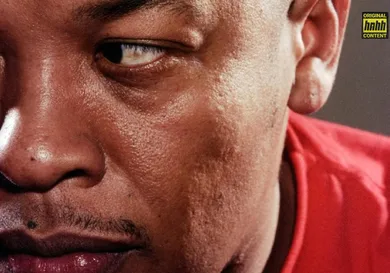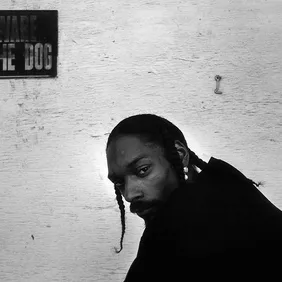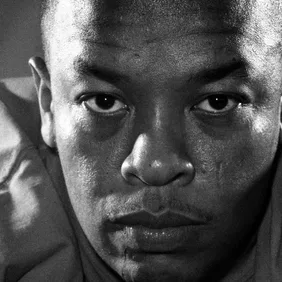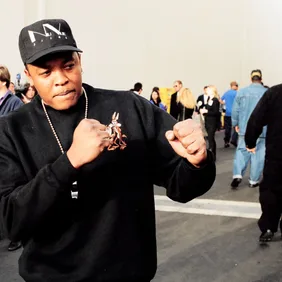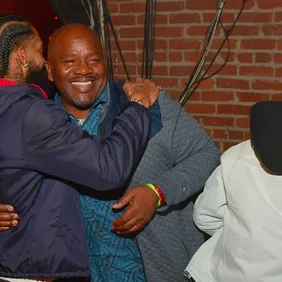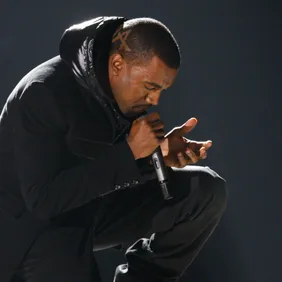Given everything he has contributed to music, there are many who might rank Dr. Dre among history’s most versatile modern composers. Having mastered no shortage of stylistic acrobatics, from sampling and interpolating G-Funk on The Chronic to concocting an eerie, carnivalesque canvas for Slim Shady’s Relapse, Dr. Dre seemed to veer toward on a particular aesthetic. It’s one I have discussed before, simply dubbed The Dark Banger.
For a great number of years, Dre and his team of loyal musicians (a team that included talents like Scott Storch, Mike Elizondo, Dawaun Parker, and Mark Batson) gravitated toward a gloomy aesthetic. Simultaneously drawing from gothic musical qualities and gangsta-rap sonic expectations, the alchemical Dre discovered a simple yet undeniably effective formula: minor-key progressions and crisp, hard-hitting percussion, often occupying little within the mix.
At his darkest, Dre’s drum arrangements skew closer to a funeral dirge than the scurrying trap drums of today’s contemporary climate. Instruments like church organs, choir chants, harpsichords, and detuned pianos make up the bulk of his toolbox. His work invites artists to explore their more disturbing thematic urges, as artists like Eminem, Busta Rhymes, and 50 Cent have come to prove. Though many modern producers continue to utilize gloomy synthesizers, few have managed to haunt the studio halls quite like our Good Mad Doctor.
But first, an updated preface. You may notice that may of the chosen songs stem from a particular era of Dre's decade-plus career. That's not to dismiss his magnificent work with Death Row, in which many classic Dark Bangers were birthed (rest assured a list is coming). Yet somewhere down the line, Dre's gravitation toward acoustic instrumentation and live musicianship helped open new and exciting doors to dark places. What emerged was something uniquely haunting, powered by sounds closely associated with elements of dread, of horror, and general melancholy; it was, and still is, unlike anything hip-hop has ever seen.
EMINEM - SAME SONG AND DANCE
Though Eminem's accented serial killer musings helped transform Relapse into a viable cult classic, it was Dr. Dre who breathed the project, Frankenstein-esque, into life. A canvas for more most maniacal musings, Relapse allowed Dre to concoct a genuine horror film, and "Same Song And Dance" stands among his most chilling compositions. Driven by pulsating 808s and a hypnotic siren song, this gleeful tale of abduction is Em and Dre at their most evocative. Case in point, the subtle piano line within the chorus, which serves as a brutal reminder that escape is simply not an option.
BUSTA RHYMES - LEGEND OF THE FALL-OFFS
A masterclass in minimalism, Dr. Dre closed out Busta Rhyme's Aftermath debut The Big Bang in a truly disturbing fashion. Conjuring imagery of a moonlit cemetery, Busta plays the role of Death himself, ushering in the bleak tidings to those already lost. With a shovel making for the main percussive track, Dre's steady piano and cricket-fueled ambiance cast a spell of existential dread. Throw in a man legitimately pleading for his life in vain, and "Legend Of The Fall Offs" makes for the darkest song of Busta's career.
50 CENT - IN DA HOOD
Dr. Dre and 50 Cent's chemistry has yielded some legendary results, but one of their most effective works arrives by way of a deep cut. Originally released as part of the 8 Mile Soundtrack's bonus disc, 50 Cent and former Aftermath signee Brooklyn's "In The Hood" featured an eerie instrumental from Dr. Dre, who once again allowed his mix ample breathing room. 50's tales of street violence are given all the more credibility through Dre's menacing piano arpeggio, which all but suggests that hope was never present to begin with.
DR. DRE, HITTMAN, & MS ROQ - MURDER INK
Any track bringing John Carpenter's Halloween score to a hip-hop playing field deserves contention. From the minute "Murder Ink" kicks in, Chronic 2001 takes a brief detour into horror film territory, albeit one firmly entrenched in Los Angeles gangsta rap flavor. With Hitman living up to his name, and Ms. Roq playing the role of a ruthless femme fatale, Dre's murderous memoirs make for an underrated chapter of his 1999 rap opus.
G-UNIT - G'D UP
If you were to poll one hundred G-Unit loyalists with the sole purpose of deducing their finest track, there's a strong chance "G'd Up" would lead the pack. One of two Dre-produced Beg For Mercy cuts, "G'd Up" emerged from the same DNA strand as the aforementioned "Murder Ink." More entrenched in gritty realism than in Em's more cartoonish impulses, "G'd Up" made the perfect backdrop for Fif, Lloyd Banks, and Young Buck to reflect on their own heartless natures. Not to mention, there are goddamn bells.
EMINEM - MUSIC BOX
Another foray into Eminem's demented mind, "Music Box" emerged as one of the more disturbing tracks in the entire Relapse canon. Of course, should Relapse 2 ever come to see the light of day, that might very well change. As it stands, this Dr. Dre and Dawaun Parker produced lullaby seems tailormade for Em's escapist fantasies. Equally innocent and inviting, the titular music box is given a stunning hip-hop treatment, enhanced by the presence of soft, maddening strings.
ICE CUBE & DR. DRE - NATURAL BORN KILLAZ
Though Dre's darker musical inclinations would manifest most prominently in the late nineties and early millennium, the signs were always there. Look no further than "Natural Born Killaz," a track so unrepentant in nature that only a similarly-designed instrumental could do the vision justice. Co-produced with Death Row alumni Sam Sneed, "Natural Born Killaz" foregoes typical Dre subtlety in favor of pure bombastic aggression. In essence, Dre and Sneed throw everything at the wall, from distorted G-funk whines to off-kilter alien sine waves, creeping piano lines to borderline dissonant chimes. A spiked wall of sound hellbent on wreaking havoc, "Natural Born Killers" arrives straight from the depths of hell.
DR. DRE & HITMAN - BIG EGO'S
Another collaboration between himself, Mike Elizondo, and Scott Storch, "Big Ego's" stands as one of 2001's more underrated staples. While never released as a single, the track has been heralded as a cult favorite, largely in part to the magnificent instrumental. Further evidence of Dre's trademark formula, which is to say minor-key piano riffs and quick bursts of bass, "Big Ego's" successfully conveys a nightmarish quality without even trying. Not every track can successfully work in a visceral drive-by shooting, but lo and behold. A classic that will linger long after the album winds to a close...but whatever happened to Hittman?
EMINEM - EVIL DEEDS
In truth, there were many Eminem tracks vying for placement, with many (like "3 AM," "Buffalo Bill," and "Must Be The Ganja") deriving from Relapse. Yet "Evil Deeds" is a different sort of beast, and thus deserves to be spotlighted accordingly. Where Relapse found Em's macabre nature emerging from a state of heightened conceptual creativity, "Evil Deeds" was borne from a state of emotional melancholy. Dre's haunting choirs and organ chords yield a truly defeated performance from an exhausted Slim, who does his best to escape from the labyrinth with sanity intact. You be the judge of that one.
BUSTA RHYMES - HOLLA
"By now, you can feel the whole cathedralish bounce," cries Busta, on the Dre-laced Genesis standout. The perfect description of a one-of-a-kind instrumental, which ultimately feels like a turning point in Dre's overall sonic journey. Is it not fair to suggest that the sheer zaniness of "Holla" may very well have foreshadowed some of Relapse's greater designs? Cited by the man himself as "full moon" music, Busta Rhymes wastes little time in spazzing like a man possessed; as Dre's music would help Em tap into his baser instincts, they would ultimately do the same for Bus-a-Bus. Who else but Dr. Dre could conceivably pull this one off?
